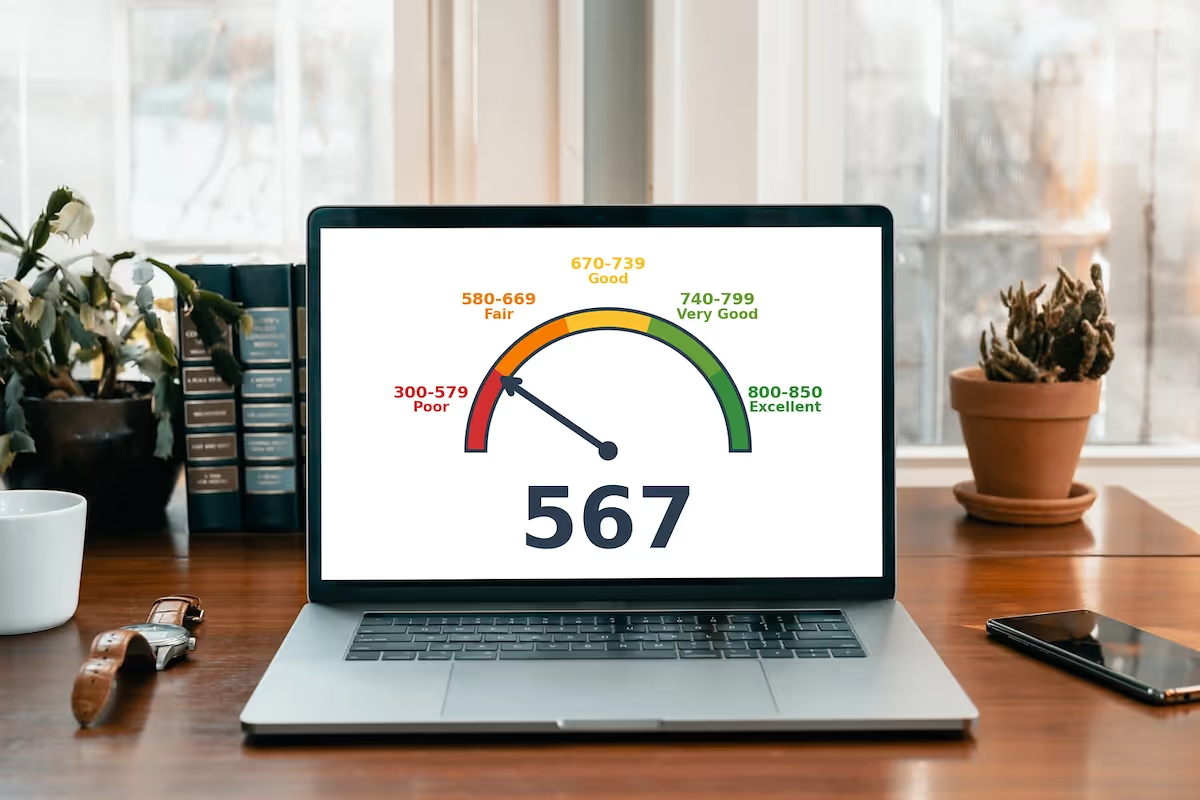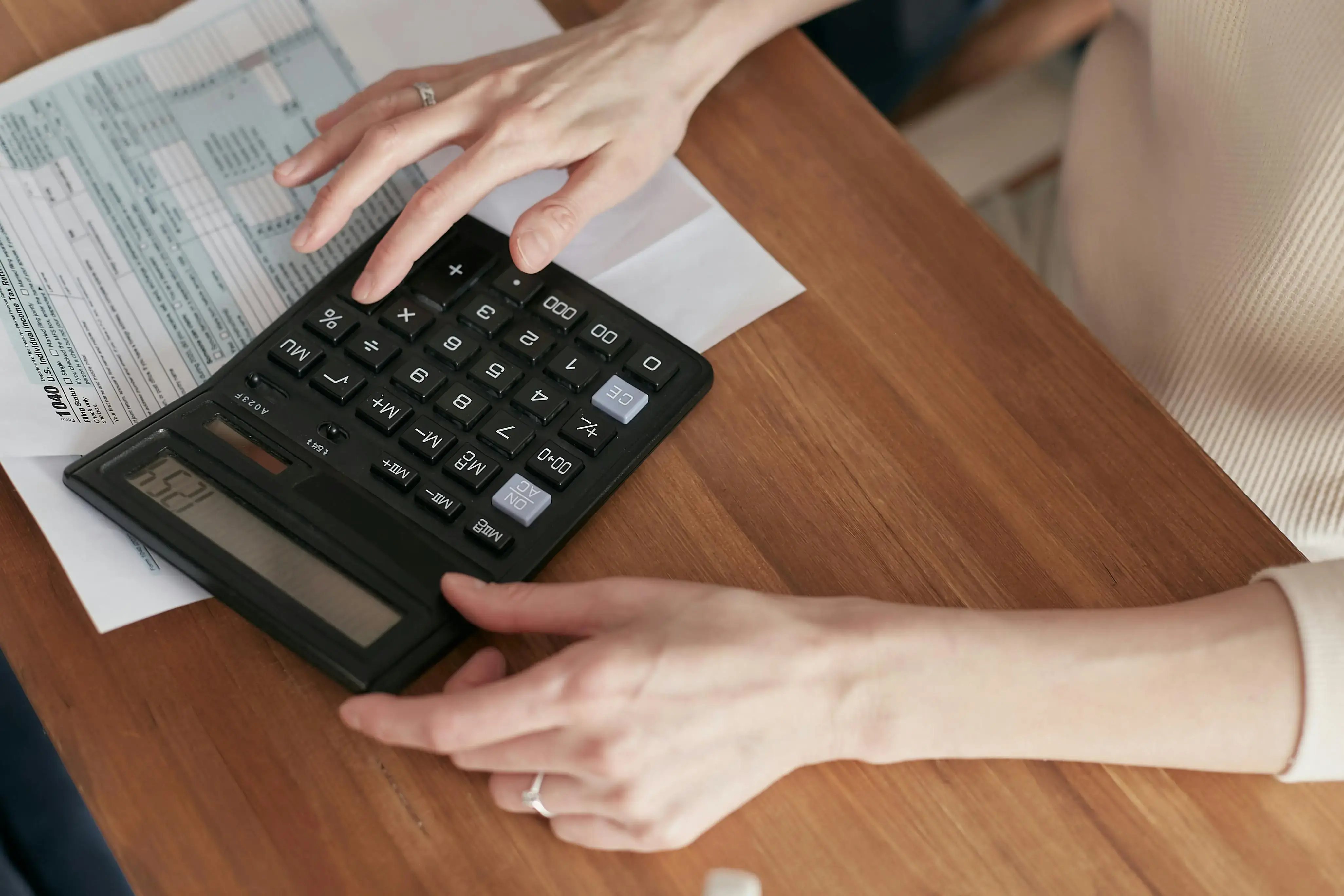
Kudos has partnered with CardRatings and Red Ventures for our coverage of credit card products. Kudos, CardRatings, and Red Ventures may receive a commission from card issuers. Kudos may receive commission from card issuers. Some of the card offers that appear on Kudos are from advertisers and may impact how and where card products appear on the site. Kudos tries to include as many card companies and offers as we are aware of, including offers from issuers that don't pay us, but we may not cover all card companies or all available card offers. You don't have to use our links, but we're grateful when you do!
567 Credit score: What You Need to Know in 2025
July 1, 2025


TL;DR
While a 567 credit score presents challenges, it offers a clear opportunity to build a stronger financial profile. This score falls into the "Poor" category on the FICO scale, which is a crucial first step to understand on your credit-building journey.
What Does a 567 Credit Score Mean?
A 567 credit score falls into the 'Poor' category on the FICO scale, which ranges from 300 to 850. Lenders see this score as a sign of high risk, which can directly impact your finances. You might find it difficult to get approved for loans or credit cards, and any offers you do receive will likely have high interest rates and unfavorable terms, making borrowing more expensive.
While this score presents challenges, it's not a permanent state. Think of it as a baseline from which you can build. Your credit score is dynamic, and establishing a pattern of responsible financial behavior can pave the way for improvement. Over time, a stronger score can unlock more favorable financial opportunities and greater stability.
Who Has a 567 Credit Score?
While age isn't a direct factor in calculating your credit score, there is a clear correlation showing scores improve over time. The average credit scores by generation, based on 2023 Experian data, break down as follows:
- Generation Z (ages 18-26): 680
- Millennials (ages 27-42): 690
- Generation X (ages 43-58): 709
- Baby Boomers (ages 59-77): 745
- Silent Generation (ages 78+): 760
Credit Cards With a 567 Credit Score
With a credit score of 567, you fall into the "poor" credit category, which can make qualifying for a traditional credit card a significant challenge. Lenders generally view this score as an indicator of higher risk, so you may face rejections from many mainstream card issuers. Consequently, your most viable options will likely be secured credit cards or specific unsecured cards designed for building credit, which often come with lower credit limits and higher fees.
Kudos offers tools like the Explore Tool, which uses a quiz to understand your financial priorities, such as building credit or minimizing fees. Based on your answers, it provides personalized recommendations from a database of nearly 3,000 cards, helping you find an option that fits your specific circumstances.
Auto Loans and a 567 Credit Score
A 567 credit score places you in the subprime borrower category, which means you will likely face significantly higher interest rates on an auto loan. While you may still get approved, the terms will be much less favorable than for applicants with higher credit scores, according to a 2025 market analysis.
- Super-prime (781-850): 5.25% for new cars, 7.13% for used cars
- Prime (661-780): 6.87% for new cars, 9.36% for used cars
- Non-prime (601-660): 9.83% for new cars, 13.92% for used cars
- Subprime (501-600): 13.18% for new cars, 18.86% for used cars
- Deep subprime (300-500): 15.77% for new cars, 21.55% for used cars
Mortgages at a 567 Credit Score
A 567 credit score significantly narrows your mortgage choices, placing most conventional loans out of reach. However, you may still qualify for a government-backed FHA loan. According to one mortgage guide, FHA applicants with scores below 580 are required to provide a down payment of at least 10% to secure financing.
Beyond the higher down payment, a 567 score leads to less favorable loan terms. You can expect a significantly higher interest rate compared to borrowers with better credit. For FHA loans, you will also face more expensive upfront and annual mortgage insurance premiums, which increases the overall cost of your loan.
What's in a Credit Score?
Figuring out what goes into your credit score can feel like trying to solve a complex puzzle, but it generally boils down to a handful of key elements. The most common factors include:
- Your history of making payments on time is the most significant factor.
- How much of your available credit you're currently using, known as your credit utilization ratio, plays a major role.
- The age of your credit accounts, including the average age and the age of your oldest account, is also considered.
- Lenders like to see that you can responsibly manage different types of credit, such as credit cards and loans.
- Opening several new credit accounts in a short period can be seen as a risk and may temporarily lower your score.
How to Improve Your 567 Credit Score
No matter your current financial standing, improving your credit score is always possible with time and consistent effort. Whether you're aiming for a FICO® Score or VantageScore, taking deliberate steps can boost your creditworthiness and build a healthier financial profile.
- Monitor your credit reports. Regularly checking your reports helps you spot and dispute inaccuracies or signs of identity theft that could be dragging your score down. For someone with a 567 score, correcting even a single error can provide a meaningful boost.
- Set up automatic bill payments. Your payment history is the single most important factor in your credit score, so paying on time is non-negotiable. Automating payments ensures you never miss a due date, which is the most critical step to rebuilding your credit.
- Lower your credit utilization ratio. This ratio—the amount of credit you're using compared to your total limits—is the second-biggest influence on your score. Aiming to keep your utilization below 30% shows lenders you can manage credit responsibly and can lead to a quick score increase.
- Apply for a secured credit card. If you have damaged credit, a secured card is an excellent tool for rebuilding a positive payment history. Because it requires a cash deposit as collateral, it's easier to get approved, and your responsible use gets reported to the credit bureaus.
You can use a tool like the Kudos browser extension to find personalized card recommendations that fit your strategy for building credit.
Unlock your extra benefits when you become a Kudos member

Turn your online shopping into even more rewards

Join over 400,000 members simplifying their finances

Editorial Disclosure: Opinions expressed here are those of Kudos alone, not those of any bank, credit card issuer, hotel, airline, or other entity. This content has not been reviewed, approved or otherwise endorsed by any of the entities included within the post.



































.webp)



.webp)



.webp)

